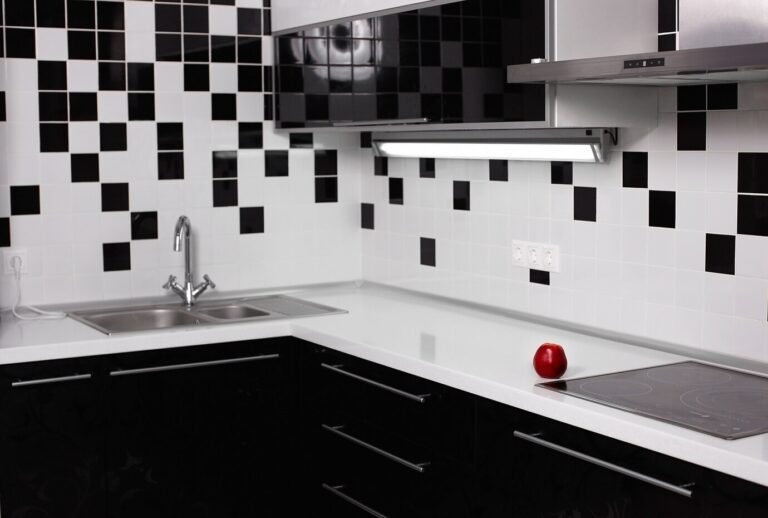
Introduction
Kitchen tiles play a crucial role in both the functionality and aesthetics of your cooking space. Whether you’re renovating or building a new kitchen, selecting the right tiles can enhance durability, ease of cleaning, and overall style. With countless materials, colors, patterns, and finishes available, making the right choice can be overwhelming. This guide explores different types of kitchen tiles, their benefits, and key factors to consider before making a decision.
1. Types of Kitchen Tiles: Which One is Best for You?
When selecting kitchen tiles, the material is the first thing to consider. Ceramic tiles are a popular choice due to their affordability, durability, and wide variety of designs. They are resistant to moisture and stains, making them ideal for kitchens. Porcelain tiles, a denser and more durable option, are perfect for high-traffic areas as they resist scratches and water absorption. Natural stone tiles, such as marble, granite, or slate, offer a luxurious look but require regular sealing to prevent stains. Glass tiles add a modern touch and reflect light beautifully, though they may be prone to scratches. Cement tiles are trendy for their bold patterns but need sealing to avoid moisture damage. Each type has its pros and cons, so your choice should depend on your budget, maintenance preferences, and style.
2. Choosing the Right Tile Size and Layout
Tile size significantly impacts the overall look of your kitchen. Small tiles, like subway tiles (3×6 inches), create a classic and timeless appearance, especially in a brick-lay pattern. However, they require more grout lines, which can be harder to clean. Large tiles (12×24 inches or bigger) make a small kitchen appear more spacious with fewer seams, giving a sleek and modern feel. Mosaic tiles (1×1 inches or smaller) are perfect for backsplashes, adding intricate detail and texture. The layout pattern—whether herringbone, chevron, or straight stack—also influences the visual appeal. A well-planned tile size and layout can enhance both aesthetics and functionality.
3. Color and Finish: Setting the Mood of Your Kitchen
The color of your kitchen tiles sets the tone for the entire space. Neutral tones like white, beige, or gray create a clean and timeless look, making the kitchen feel bright and airy. Dark-colored tiles, such as navy or black, add sophistication but may make a small kitchen feel cramped. Bold and vibrant tiles can serve as an accent wall or backsplash, adding personality to the space. The finish also matters—glossy tiles reflect light and are easy to clean, while matte finishes offer a modern, non-slip surface but may require more maintenance. A balanced combination of colors and finishes can transform your kitchen into a stylish and inviting area.
4. Backsplash Tiles: Combining Style and Functionality
A kitchen backsplash protects walls from spills, grease, and stains while adding a decorative element. Subway tiles remain a classic choice, offering a clean and versatile look. Patterned tiles, such as Moroccan or geometric designs, create a focal point in the kitchen. Metallic or mirrored tiles add a touch of glamour and reflect light, making the space appear larger. When choosing a backsplash, consider ease of cleaning—smooth, non-porous tiles are best for resisting grease buildup. A well-selected backsplash can tie together the entire kitchen design while providing practical benefits.
5. Floor Tiles: Durability and Safety Considerations
Kitchen floors endure heavy foot traffic, spills, and dropped items, so durability is key. Porcelain and ceramic tiles are top choices due to their hardness and water resistance. Textured or matte-finish tiles provide better slip resistance, which is crucial in a kitchen where spills are common. Large-format tiles reduce grout lines, making cleaning easier. If you prefer a warmer feel underfoot, heated floor tiles are an excellent option, though they come at a higher cost. Always prioritize safety, ease of maintenance, and longevity when selecting kitchen floor tiles.
Conclusion
Choosing the right kitchen tiles involves balancing aesthetics, functionality, and budget. From material and size to color and finish, each decision contributes to the overall look and usability of your kitchen. Whether you prefer a sleek modern design or a cozy traditional feel, the right tiles can elevate your space while ensuring durability and ease of maintenance. Take your time exploring options, and don’t hesitate to mix and match styles to create a kitchen that reflects your personality and meets your practical needs.